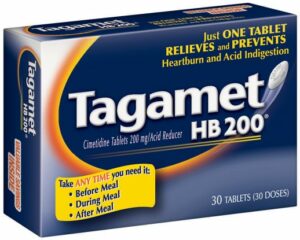Two Year Propecia Results
In this Friday’s Wall Street Journal (12-19-97), Page B1, “Bulletins from the Battle of the Baldness Drugs,” Merck’s two year follow-up results for Propecia were announced. It was announced that after two years, 66% of trial participants showed cosmetically significant hair growth compared to 50% on the treatment after year one. In the placebo group, only 7% showed hair growth at both years. This supports the prevailing theory that Propecia will work slowly to improve hair growth since it prevents further damage to the follicle rather than directly stimulating growth. These figures also discount the complaints of certain antipropecia, pronatural advocates on the internet that Propecia would wear out after one year. Rather the converse is true, that improvement will be gradual and prolonged. These studies of course do not take into account simultaneous use of Minoxidil, which would speed up and improve results in most people who respond to the treatment.
Propecia Pricing
Last week (12-3-97) Merck sent out information to pharmacists detailing their pricing for the new “anti-baldness drug,” Propecia. Merck plans to sell the drug to pharmacies for $1.25 per pill. Once pharmacies mark up the prices to include their profit, the final price of the drug will probably be around $50 per month for consumers.
It was originally reported on this web site that Merck was looking to charge around $40 per month ($1.25 per pill comes out to $37.50 for a one month supply). However recently our sources indicated that Merck was leaning more towards $30 per month to be competitive with Upjohn’s newly approved Rogaine Extra Strength. The move comes as a surprise to the Regrowth staff and probably to the delight of Upjohn, who was disappointed with sales of their original 2% Rogaine formula (also priced $50 by prescription) and hoping for higher sales with their new 5% formula at the same price as their old 2% OTC version.
What is curious is the motive of Merck in its pricing scheme. Obviously it has given up on the idea of competitive pricing with Upjohn. Most likely they have either decided that the products effectiveness will speak for itself and that they can get away with charging that much, or they believe that sales will not be as high as they would like so they have to charge more to make up the costs of developing and getting the drug approved. The latter reason is often given as a reason for high prescription medication prices, since fewer people go through the trouble of getting a prescription than if a drug is over the counter.
Besides thrilling Upjohn, whose product will be available over the counter at a much lower price, the move probably meets the approval of overseas importers of Proscar. Proscar can be purchased for around $55-60 for 30 pills with a prescription and anywhere from $60-90 for the same amount from overseas (usually closer to $90). When each pill is cut into four quarters, the 30 day supply can be made to last 4 months, or for a price of around $15 to $22 per month depending on your source.
Proscar is also approved only for the treatment of Prostate enlargement and is therefore covered by most insurance policies, allowing insured consumers to purchase the drug at low rates with a prescription. It is standard practice for insurance policies not to cover drugs used for ‘cosmetic’ purposes, so it is unlikely that Propecia will be covered by many insurance policies. This will give consumers incentive to get a prescription for Proscar rather than Propecia, as many educated consumers are already doing.
The question is, once Propecia is approved, will doctors continue to prescribe Proscar for hair loss? Many are uncomfortable to doing so due to liability issues. Once Propecia is approved, many doctors will likely refuse to prescribe Proscar and prescribe only Propecia, leaving many patients forced to pay the higher price for Propecia.
A point has to be made that Proscar, which contains 5 times as much Finasteride as Propecia, will cost only a few dollars more. Regrowth is often a defender of the larger pharmaceutical companies and their pricing, since they do have to regain (no pun intended) their expenses and make a profit. However, in this case Propecia is not a new drug, so there were no ‘development’ costs. There is 1/5 as much of the drug as in Proscar and the company has been making Proscar for years, so actual cost of production will be less since there is less Finasteride in the pill and they already have the production capacity set up to produce the pills. Add to this that the market for a successful hair loss drug is huge (it is estimated that over 500,000 men worldwide have used Proscar – the market worldwide for Proscar has to be 10-100 times higher potentially if marketed properly) and you wonder how Merck justifies its pricing. Merck defended its pricing by comparing the price of Propecia to the large cost of transplants or hair systems. One wonders if the hidden meaning they are implying is “our product is cheaper compared to alternatives” or “other companies rip people with hair loss off, why shouldn’t we?”
The author of this article uses quartered Proscar pills daily. I was seriously considered switching to prescription Propecia despite paying more once it was available when it was believed that pricing would be around $30 per month. Now I am reconsidering. Merck would do well to pay attention to people like myself.





